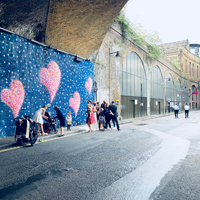Public Transportation in Baguio city
Summary: Learning how to get around using public transportation in Baguio city is an important step in adjusting to life in Baguio city. In this article, we cover the local public transportation options.
Baguio City, located in the mountainous region of the Philippines, is known for its cool climate and beautiful landscapes. The city is well-served by a variety of public transportation options, making it possible for residents and visitors to navigate the city without the need for a personal vehicle. The most common forms of public transportation in Baguio City are jeepneys, taxis, and tricycles. There is also a bus system that connects Baguio City to other parts of the Philippines. With these options, an expat living in Baguio City could comfortably live without a car, relying on the public transportation system and walking.
Jeepneys
Jeepneys are the most popular form of public transportation in Baguio City. These colorful, decorated vehicles are a unique feature of the Philippines and are a cheap and convenient way to get around. Jeepneys follow specific routes, but there are no designated stops - passengers can simply flag down a jeepney and hop on. While jeepneys are generally safe, they can get crowded, especially during peak hours. The fare is usually around 8-10 pesos, making it an affordable option for daily commuting. However, it's important to note that jeepneys may not be the most comfortable option for long-distance travel due to their open-air design and lack of air conditioning.
Taxis
Taxis are another common form of transportation in Baguio City. They are readily available and can be hailed from the street or booked through a mobile app. Taxis in Baguio City are metered, ensuring fair pricing. The base fare is 35 pesos, with an additional 2 pesos for every 400 meters. Taxis are generally safe and reliable, and they offer a more comfortable and private mode of transportation compared to jeepneys. However, during peak hours or in heavy traffic, the cost can add up.
Tricycles
Tricycles, or motorized rickshaws, are a common sight in Baguio City. They are typically used for short distances, especially in areas where jeepneys and taxis are less frequent. Tricycles can accommodate up to two passengers, and the fare usually ranges from 10 to 20 pesos depending on the distance. While tricycles are a fun and unique way to get around, they may not be the safest option, especially in heavy traffic or bad weather.
Buses
For long-distance travel, buses are the most common form of public transportation. Baguio City is well-connected to other parts of the Philippines through a network of bus routes. The bus fare varies depending on the distance and the type of bus (ordinary or air-conditioned), but it is generally affordable. Buses are a safe and reliable option for long-distance travel, but they can get crowded, especially during holidays and peak travel seasons.
In conclusion, public transportation in Baguio City is diverse, affordable, and generally safe. While each mode of transportation has its pros and cons, they collectively make it possible for residents and visitors to get around the city without the need for a personal vehicle. Whether you're an expat living in Baguio City or a tourist exploring the city, you can rely on the public transportation system to navigate the city's beautiful landscapes and vibrant culture.
About the Author
 Joshua Wood, LPC joined Expat Exchange in 2000 and serves as one of its Co-Presidents. He is also one of the Founders of Digital Nomad Exchange. Prior to Expat Exchange, Joshua worked for NBC Cable (MSNBC and CNBC
Primetime). Joshua has a BA from Syracuse and a Master's in Clinical and Counseling Psychology from Fairleigh Dickinson University. Mr. Wood is also a licensed counselor and psychotherapist.
Joshua Wood, LPC joined Expat Exchange in 2000 and serves as one of its Co-Presidents. He is also one of the Founders of Digital Nomad Exchange. Prior to Expat Exchange, Joshua worked for NBC Cable (MSNBC and CNBC
Primetime). Joshua has a BA from Syracuse and a Master's in Clinical and Counseling Psychology from Fairleigh Dickinson University. Mr. Wood is also a licensed counselor and psychotherapist.
Some of Joshua's articles include Pros and Cons of Living in Portugal, 10 Best Places to Live in Ireland and Pros and Cons of Living in Uruguay. Connect with Joshua on LinkedIn.




